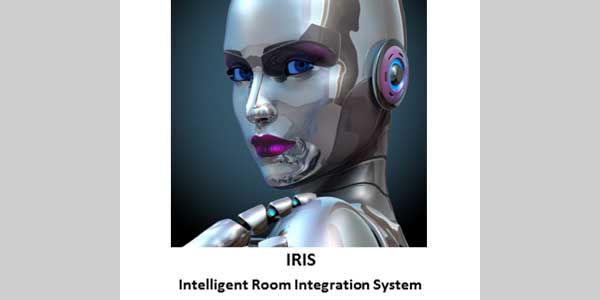Artificial Intelligence (AI) in lighting control allows for real-time analysis and adjustment of lighting settings based on factors such as occupancy, ambient light, and energy consumption. This technology surpasses standard lighting control systems by analyzing vast amounts of data and optimizing performance.
The role of AI in the lighting industry is transformative, offering novel techniques in lighting design and control. With AI, buildings can be monitored and lighting can be controlled accordingly, ensuring efficient and effective lighting solutions. This article explores the current applications of AI in lighting and the potential for future advancements in this field.
Introduction To Artificial Intelligence In Lighting Control
Artificial Intelligence in lighting control is revolutionizing the way we manage and optimize lighting systems. With the ability to analyze data in real-time, AI systems can adjust lighting settings based on factors like occupancy and energy consumption, resulting in more efficient and personalized lighting solutions.
What Is Ai Lighting?
AI lighting refers to the integration of artificial intelligence technology into lighting control systems. It allows for intelligent and automated control of lighting in various settings, such as residential homes, commercial buildings, and outdoor spaces. AI lighting uses advanced algorithms and machine learning to analyze data and make real-time adjustments to lighting settings, optimizing energy efficiency, comfort, and overall user experience.
Current Applications Of Ai In Lighting
AI technology is already being used in lighting control systems to enhance efficiency and convenience. Some current applications include:
- Smart Lighting: AI-powered smart lighting systems can adapt to user preferences, adjust brightness and color temperature, and even respond to voice commands or presence detection.
- Energy Optimization: AI algorithms analyze data from sensors and optimize lighting usage based on factors like occupancy, ambient light, and user behavior, leading to significant energy savings.
- Personalized Lighting: AI lighting systems can create personalized lighting settings for individuals or groups, considering factors such as age, visual impairment, and circadian rhythms.
- Dynamic Lighting: AI algorithms can dynamically adjust lighting color and intensity to create different moods, enhance productivity, or support specific activities, such as studying or relaxation.
Future Potential Of Ai In Lighting
The potential of AI in lighting control is vast and promising. As technology continues to advance, we can expect to see even more innovative applications, such as:
- Contextually Aware Lighting: AI systems will be able to analyze various contextual factors like weather conditions, time of day, and user preferences to automatically adapt lighting accordingly.
- Health and Wellness Lighting: AI lighting could contribute to improving the health and well-being of individuals by adjusting lighting to support natural circadian rhythms, reduce eye strain, and enhance sleep quality.
- Smart City Lighting: AI-powered lighting systems can contribute to creating smart cities by optimizing energy usage, reducing light pollution, and providing valuable data for urban planning and management.
- Intelligent Energy Management: AI algorithms can optimize lighting control systems in conjunction with other energy-consuming devices, such as HVAC systems, to increase overall energy efficiency and reduce environmental impact.
Artificial intelligence in lighting control has the potential to revolutionize the way we interact with and benefit from lighting systems. As technology continues to advance, we can look forward to more energy-efficient and personalized lighting experiences that will enhance our comfort, productivity, and overall well-being.
Types Of Lighting Control Systems
When it comes to lighting control systems, there are several types that offer a range of features and functionalities. Each type is designed to cater to different needs and situations, ensuring optimal control and energy efficiency. In this section, we will explore three common types of lighting control systems in detail:
Dimmers
Dimmers are electronic devices used to control the intensity of illumination. With a dimmer, users have the flexibility to adjust the brightness of their lights according to their preferences. Whether it’s for creating a cozy ambiance, setting the right mood for a gathering, or simply conserving energy, dimmers offer a convenient and versatile solution. By reducing the power supplied to the light source, dimmers not only help save energy but also extend the lifespan of bulbs and fixtures.
Motion Sensors And Occupancy Sensors
Motion sensors and occupancy sensors are intelligent devices that detect motion or the presence of people in a space. These sensors automatically switch on the lights when someone enters a room and turn them off when the space is vacant. This type of lighting control system is particularly useful in areas where lighting is needed only temporarily, such as hallways, restrooms, and conference rooms. By eliminating the need for manual control, motion sensors and occupancy sensors contribute to energy savings and enhance convenience.
Timers
Timers are devices that allow users to schedule when their lights should turn on or off. These can be programmed to operate at specific times of the day or night, providing automation and convenience. Timers are commonly used in outdoor lighting applications, such as garden or landscape lighting, where it is desirable to have the lights illuminate during specific hours. By utilizing timers, users can ensure energy efficiency and improved security by having their lights operate automatically.
Understanding the different types of lighting control systems can help individuals and businesses make informed decisions when it comes to implementing smart lighting solutions. Whether it’s dimmers for customizable illumination, motion sensors for energy-efficient lighting automation, or timers for scheduled operation, these systems offer enhanced control, comfort, and cost savings.
Advantages And Disadvantages Of Ai Lighting Control
Artificial Intelligence (AI) technology has revolutionized various industries, and lighting control is no exception. AI lighting control combines machine learning algorithms and smart sensors to automate and optimize lighting settings. While there are numerous advantages to implementing this technology, it also comes with a few potential drawbacks. In this section, we will explore the benefits and downsides of AI lighting control.
Advantages Of Ai Lighting Control
Implementing AI in lighting control offers several advantages that contribute to energy efficiency, convenience, and personalized user experiences. Some key advantages are:
- Energy Efficiency: AI lighting control systems can analyze real-time data, such as occupancy and ambient light, to adjust lighting settings based on actual needs. This optimization results in significant energy savings by eliminating unnecessary energy usage.
- Cost Savings: By reducing energy consumption, AI lighting control can lead to substantial cost savings for businesses and homeowners in the long run. Lower electricity bills and increased lifespan of lighting fixtures contribute to a more sustainable and budget-friendly environment.
- Enhanced User Experience: AI lighting control systems can create personalized lighting environments based on user preferences, time of day, or specific activities. This customization enhances comfort, productivity, and well-being by providing the right lighting atmosphere for any situation.
- Automation and Convenience: With AI lighting control, manual adjustment of lighting settings becomes a thing of the past. The system can automatically adjust lighting levels, colors, and effects based on predefined or learned patterns, saving time and effort for users.
- Adaptability and Flexibility: AI lighting control systems can analyze various factors such as weather conditions, natural light, and overall occupant behavior to adapt lighting settings accordingly. This adaptability ensures that the lighting environment remains optimal in any situation or environment.
Disadvantages Of Ai Lighting Control
While AI lighting control offers several advantages, there are also a few disadvantages to consider:
- Complexity and Initial Investment: Implementing AI lighting control systems may require a certain level of technical expertise and initial investment. The complexity of integrating various sensors, algorithms, and software components can pose challenges during the installation and setup phase.
- Reliance on Technology: Like any technology-driven solution, AI lighting control systems are dependent on the proper functioning of their hardware, software, and connectivity components. Any malfunction or interruption can disrupt the lighting control, impacting user experience and convenience.
- Privacy and Security Concerns: AI lighting control systems involve the collection and analysis of user data, such as occupancy patterns and preferences. This raises concerns about privacy and data security. Implementing robust security measures and ensuring compliance with relevant regulations is crucial to address these concerns.
- Compatibility and Integration: Integrating AI lighting control systems with existing lighting infrastructure or other smart home devices may require compatibility checks and potentially additional hardware or software components. Ensuring seamless integration and compatibility can be a challenge in certain scenarios.
- Over-reliance on Automation: While automation offers convenience, there may be situations where manual control or fine-tuning of lighting settings is desired. AI lighting control systems may limit the flexibility for users who prefer a more hands-on approach to lighting control.
Despite these potential disadvantages, the benefits of AI lighting control are compelling and have the potential to significantly improve energy efficiency, user experience, and cost-effectiveness. By carefully considering the implementation challenges and addressing the associated concerns, businesses and homeowners can leverage AI technology to create smarter and more efficient lighting environments.

Credit: electricalnews.com
Frequently Asked Questions Of Artificial Intelligence In Lighting Control
What Is One Disadvantage Of Using An Automated System To Control The Lighting?
One disadvantage of using an automated system to control lighting is the potential for technical glitches or malfunctions that can disrupt the lighting system.
What Is Ai Lighting?
AI lighting is a system that uses artificial intelligence to control lighting settings based on factors such as occupancy, ambient light, and energy consumption. It can analyze data in real time, optimizing performance and improving energy efficiency.
What Is An Example Of A Lighting Control System?
A common example of a lighting control system is the use of dimmers, motion sensors, occupancy sensors, and timers to adjust the intensity and timing of lighting. AI systems can also analyze data in real time to optimize lighting settings based on factors like occupancy and energy consumption.
What Is An Electronic Device That Controls Lighting Intensity?
An electronic device that controls lighting intensity is called a dimmer. It allows users to adjust the brightness of the lights according to their preferences.
Conclusion
In this blog post, we have explored the numerous benefits and applications of artificial intelligence in lighting control. From optimizing energy consumption to adjusting lighting settings in real-time based on occupancy and ambient light, AI is revolutionizing the way we illuminate our spaces.
With its ability to analyze vast amounts of data and automate processes, AI offers a more efficient and sustainable approach to lighting control. As the technology continues to advance, we can expect even more transformative changes in the lighting industry.
Embracing AI in lighting control is undeniably the way forward for a smarter and more sustainable future.




